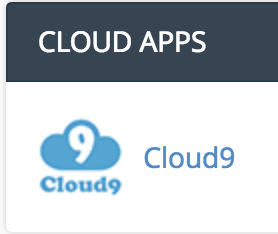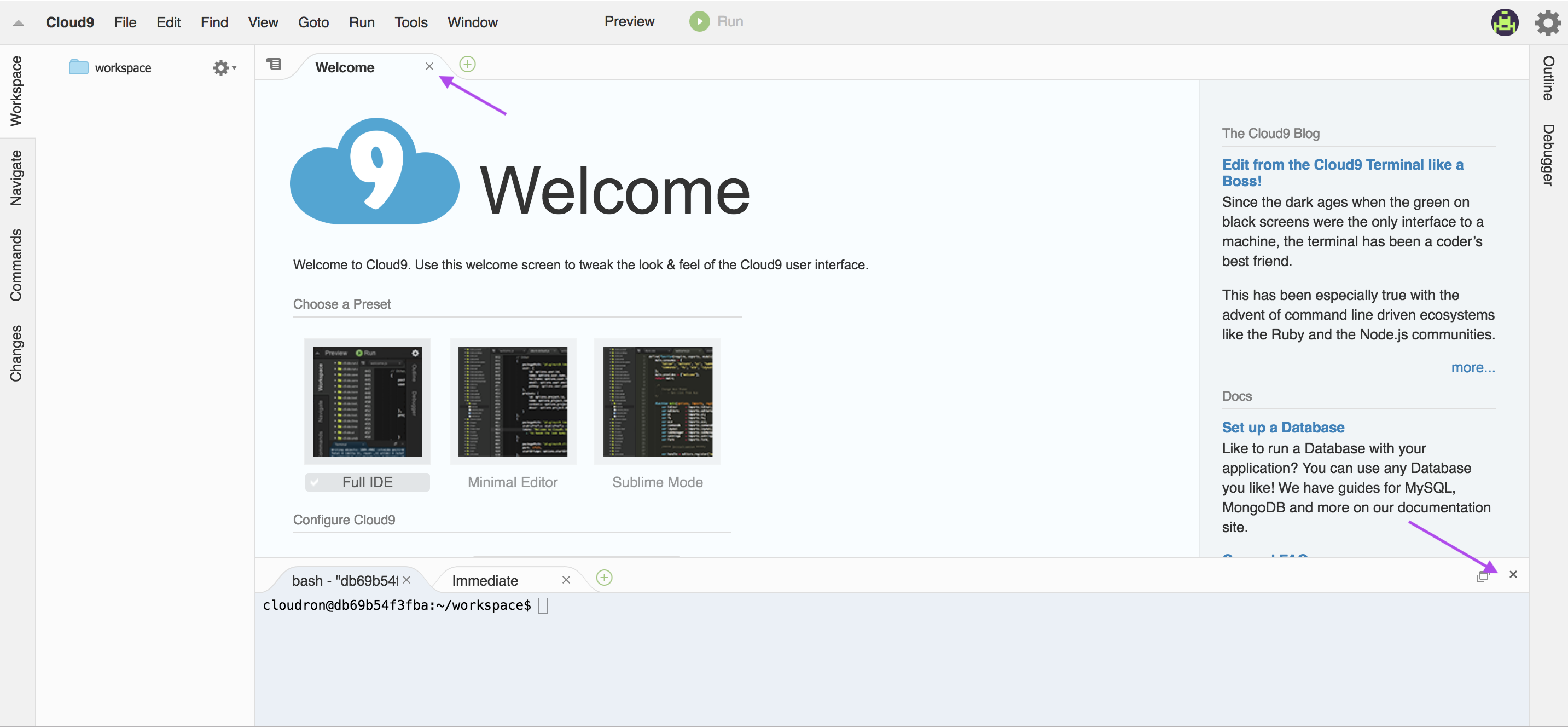Warning: Undefined variable $num in /home/shroutdo/public_html/courses/wp-content/plugins/single-categories/single_categories.php on line 126
Warning: Undefined variable $posts_num in /home/shroutdo/public_html/courses/wp-content/plugins/single-categories/single_categories.php on line 127
Creating a new folder
- Log in to catapult.
- Navigate to File Manager (in the Files section)
- Look for public_html in the left-hand sidebar. Double click on the title.
- Click on the plus sign to create a new folder. Name the folder something like DCS106 (or something) (no spaces)
Installing Jekyll
- Navigate to your Cloud9 instance. If you are a Bates students, login to Catapult, scroll down to “Cloud Apps” and click on the Cloud9 icon:

- Login to your Cloud9 instance. If you are a Bates student, your user name and password were e-mailed to you with the subject “Catapult at Bates College”
- You should see something like this:
 Name your workspace. If you are using this for a class, I’d recommend naming it with the class number or title. Click Add Workspace and then click on the blue name that appeared below.
Name your workspace. If you are using this for a class, I’d recommend naming it with the class number or title. Click Add Workspace and then click on the blue name that appeared below. - You should see a welcome screen. We are going to close out some of the tabs to do the work we need to do. Close the tabs by clicking on the x that the arrows point to.

- Click on the green circle with a plus under the GoTo menu. Select New Terminal. This environment allows you to run code that will create a webpage for you. Neat!
- Type in the following code:
sudo gem install bundler jekyll. Hit enter. This installs something called Jekyll, which is what your website will be built on. A whole bunch of code will appear follow. You will know that it is done when you see~/workspace$ - Type in the following code:
jekyll new my-awesome-sitebut replace “my-awesome-site” with the name of your site. If it this is for a class at Bates College, probably name it something that includes the course number and the semester. Replace any spaces in the name with a -. Hit enter. You should see a folder with the name you just entered in the left-hand sidebar. - Once that code finishes running, type in the following code:
cd my-awesome-sitebut replace “my-awesome-site” with the name of the site you created above. This asks the installer to put anything you do in the folder you just created. - Finally, run
bundle exec jekyll serve --host=0.0.0.0 --port=8080. This installs the blogging tool Jekyll in the file you just created!
Customizing Jekyll
- In the top bar of your Cloud9 workspace, click on Preview, and then click Open (followed by a long URL). You should see a site!
- Now, go back to your Cloud9 instance and look in the left-hand sidebar. There should be a folder with the same name as your site. Click on the triangle next to your folder name. You should see a list of folders. Double click on the file called “_config.yml”
- Editing this file will change your site. Change the text following: title, email, description, twitter_username (if you have one) and github_username (if you have one)
- Finally, look for “baseurl:” It should be followed by two quotation marks. In the quotation marks, put / and the name of the folder you created in Creating a New Folder. (For example, if my folder was called DCS106, I would edit baseurl: “” to baseurl: “/DCS106”)
- Save the site using File > Save
- Now edit the About page. Double click on about.md. Edit the text beneath
---to say something about yourself. Save the page using File > Save - We have saved the files, but now we need to update the site. To do that, go back into your terminal tab, and press control+C
- Then run the following code:
jekyll serve --host=0.0.0.0 --port=8080 - Finally, look at the preview again. Your site should have updated!
Hosting Jekyll
- The final step is hosting your new Jekyll site on your Bates domain. Double click on the folder in your sidebar called “_site”. Highlight all of the contents. Right click and select “download”. You should have a file called [+5].tar.gz wherever your files download.
- Navigate to catapult.bates.edu and login.
- Scroll down to File Manager (in the Files section). Double click.
- Locate a folder titles public_html in the left-hand sidebar. Double click on the title.
- Click on the folder you created earlier.
- In the top menu bar, click on Upload
- Drag the file called [+5].tar.gz into the box surrounded by a dotted line
- Click the link below that says “Go Back…”
- Click on the file called [+5].tar.gz and select Extract from the menu bar. Click on Extract File. A box full of text will appear. Click close.
- Now, navigate to www.yourdomain.catapult.bates.edu/yourfoldername (but replace yourfoldername with the name of the folder you created, and yourdomain with your domain) – You should see the same webpage that you previewed before!
- (If you are in DCS106 in Winter 2019, submit your URL using the form here)
Jekyll on Cloud9